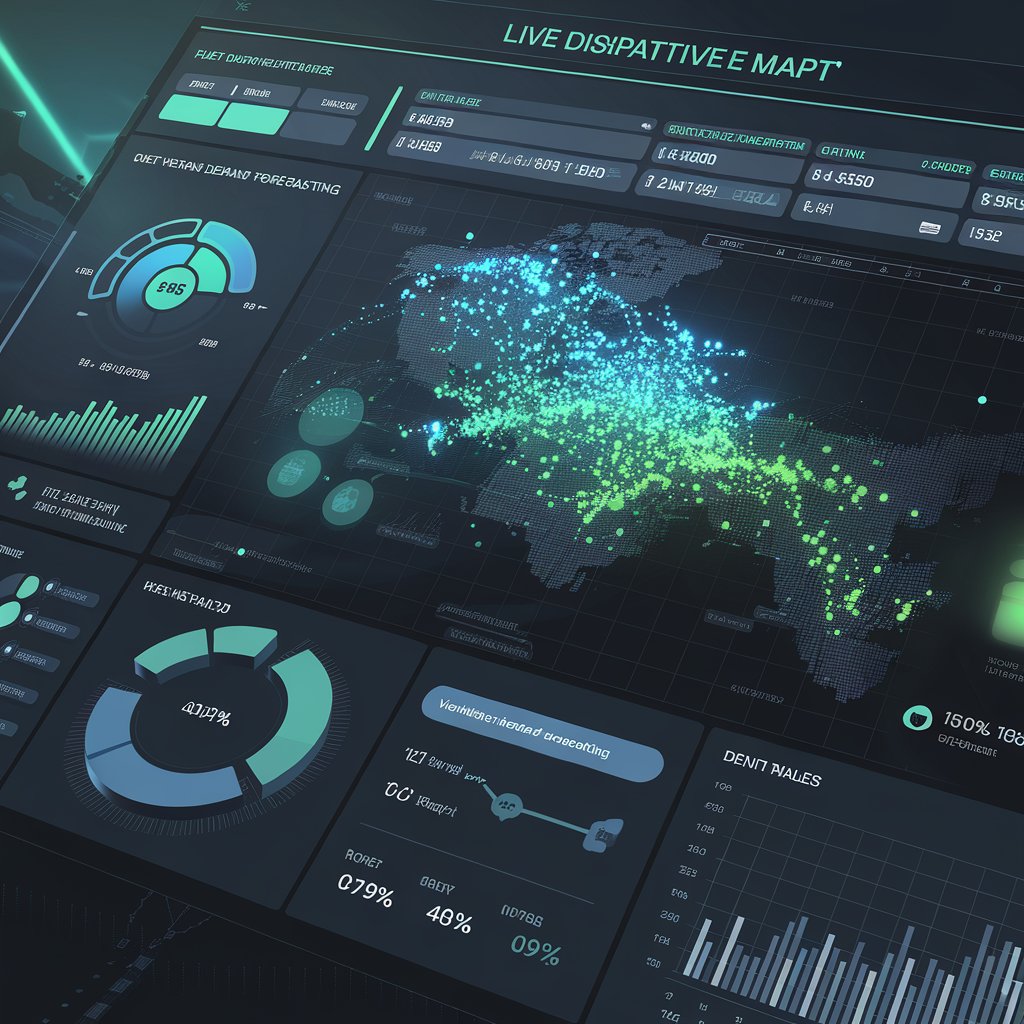Predictive Fleet Scheduling: Smarter Vehicle Planning with Linbis

Introduction
That’s why Linbis developed predictive fleet scheduling — an AI-driven solution that anticipates fleet needs, adjusts capacity in real time, and ensures every truck, van, or container is exactly where it needs to be.
By combining data, automation, and predictive intelligence, Linbis transforms fleet operations from reactive management into a self-optimizing, data-powered system.
Step 1: Centralize Fleet and Shipment Data
Linbis integrates every system and data source into one connected environment:
- Vehicle data: capacity, fuel, maintenance schedules, GPS location.
- Shipment data: delivery routes, ETAs, cargo types, and volumes.
- Order data: customer demand forecasts and booking trends.
- External data: weather, traffic, and road conditions.
- Driver data: work hours, skill sets, and availability.
This unified dataset allows the AI to understand your fleet’s full operational picture — live and historical.
Step 2: Predictive Scheduling Engine
The Linbis AI analyzes historical trends, current conditions, and upcoming orders to forecast fleet requirements:
- Predicts vehicle demand by region, route, and time window.
- Detects upcoming capacity shortages or overutilization risks.
- Forecasts maintenance windows to avoid downtime.
- Suggests optimal fleet assignments automatically.
This predictive engine enables dispatchers to plan ahead instead of reacting to last-minute issues.
Step 3: Dynamic Route and Shift Planning
Linbis transforms forecasts into action through automated scheduling:
- Assigns drivers and vehicles based on predicted demand.
- Dynamically updates routes in case of traffic or weather changes.
- Reschedules shifts when delays or cancellations occur.
- Optimizes route combinations to reduce empty miles.
The system automatically balances efficiency, compliance, and delivery commitments — in seconds, not hours.

Step 4: Real-Time Re-Optimization
Predictive doesn’t mean static — Linbis continuously monitors performance and re-optimizes schedules on the fly:
- Reassigns vehicles when unexpected orders appear.
- Adjusts ETAs dynamically to ensure on-time delivery.
- Alerts dispatchers to potential route conflicts.
- Updates drivers instantly via the Linbis mobile app.
This creates a closed-loop optimization process — predict, plan, execute, learn, and adapt.
Step 5: Maintenance and Performance Forecasting
Linbis uses predictive analytics to manage fleet health and long-term performance:
- Forecasts maintenance needs based on mileage and usage.
- Detects inefficiencies in routes or driver assignments.
- Identifies recurring mechanical issues.
- Calculates vehicle productivity and cost per mile.
By anticipating problems early, companies can reduce downtime and extend asset life across their fleets.
Step 6: Visual Dashboards and Automation Workflows
Linbis predictive fleet scheduling includes dashboards that give full operational visibility:
- Live map: monitor vehicle positions and predicted ETAs.
- KPI dashboards: utilization, delivery accuracy, and cost metrics.
- Predictive charts: upcoming demand, capacity trends, and maintenance schedules.
- Automation triggers: alerts and workflow updates based on data thresholds.
Every visual is actionable — you can adjust parameters directly from the dashboard.

Advanced Features
- AI forecasting engine for vehicle and route demand.
- Dynamic rescheduling based on live conditions.
- Predictive maintenance management.
- Multi-modal fleet integration (road, air, sea).
- Automated driver and vehicle assignment.
Real-World Example 🚛
A logistics company in Chile implemented Linbis predictive fleet scheduling to optimize regional truck operations.
In 4 months, they achieved:
- 20% fewer idle vehicles.
- 27% improvement in delivery punctuality.
- 18% lower fuel costs.
Their dispatchers now manage scheduling entirely through Linbis — with AI automatically predicting and balancing capacity every day.

Benefits 📈
- Efficiency: Predict and prevent capacity shortages.
- Accuracy: Assign the right vehicle to every job.
- Savings: Reduce fuel costs and idle time.
- Reliability: Prevent downtime with predictive maintenance.
- Scalability: Adapt automatically to demand changes.
Conclusion
With predictive fleet scheduling, Linbis gives logistics providers the ability to see beyond the present.
By combining AI forecasting, automation, and real-time data, Linbis helps companies anticipate demand, optimize utilization, and deliver with precision.
Fleet planning is no longer a manual struggle — it’s a predictive science powered by Linbis.
